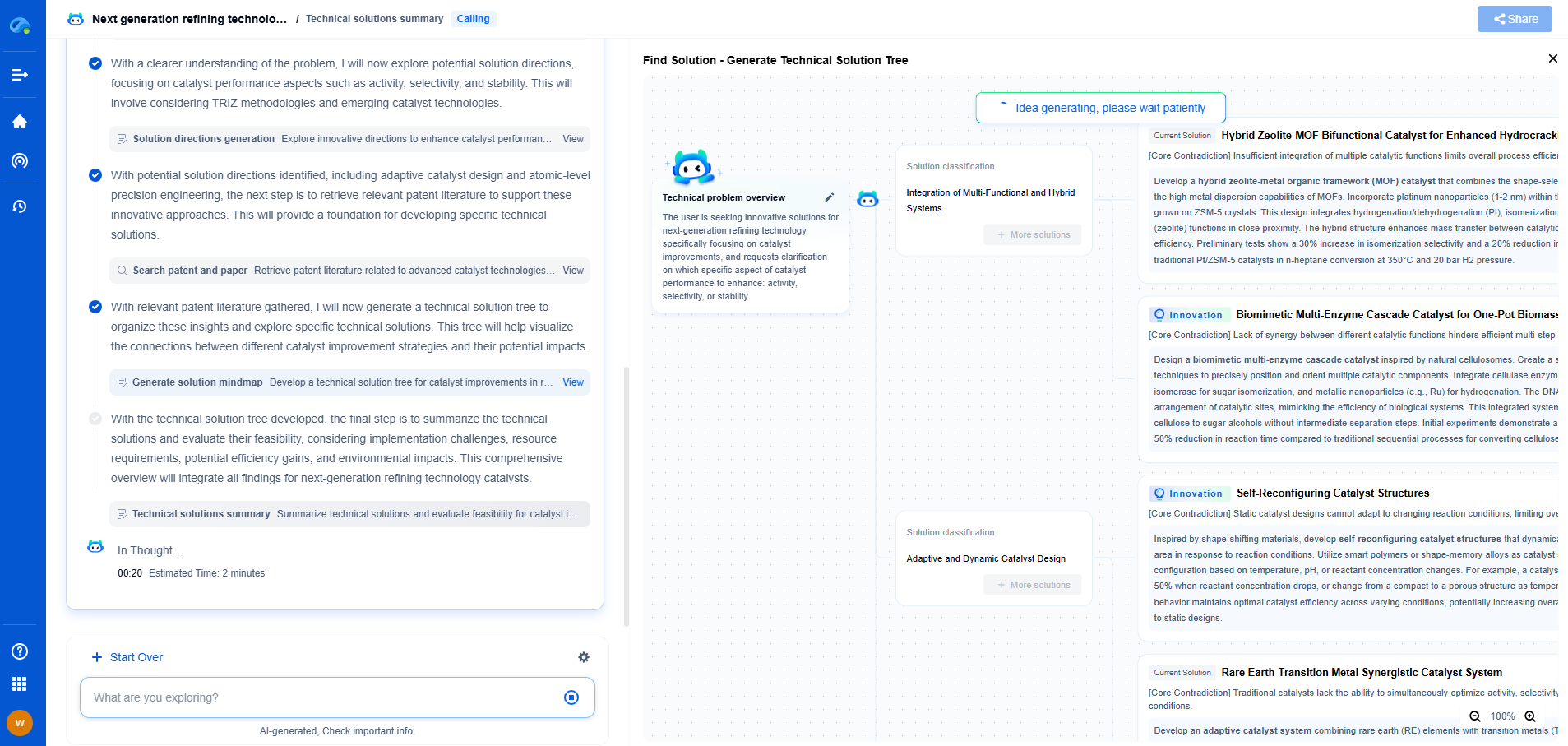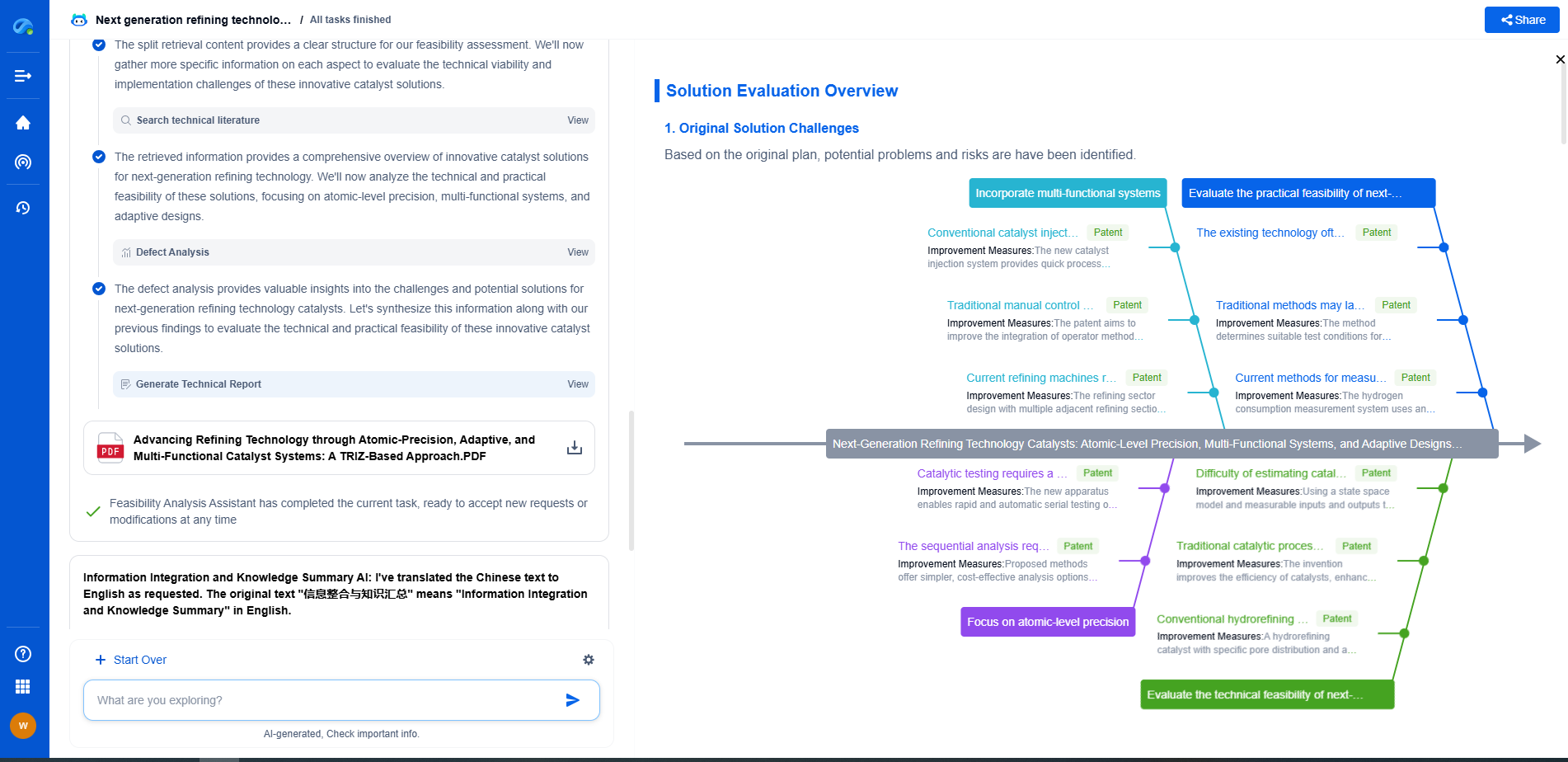Envelope Analysis 101: Detecting Bearing Faults from Vibration Signals
JUL 16, 2025 |
Envelope analysis is a powerful diagnostic tool used in the field of predictive maintenance for detecting faults in rolling element bearings through vibration analysis. Bearings are critical components in numerous mechanical systems, and their failure can lead to significant downtime and costly repairs. As such, early fault detection is crucial, and envelope analysis provides a means to achieve this by focusing on the high-frequency modulated signals produced by faulty bearings.
Understanding Vibration Signals
Before diving into envelope analysis, it's essential to understand the nature of vibration signals. In machines, bearings are subject to various forces and motions, leading to complex vibration patterns. When a bearing defect occurs, such as a crack or spall, it induces a repetitive impact each time the defect interacts with other bearing components. This impact modulates the original vibration signal, creating amplitude modulation that is key to fault detection.
What is Envelope Analysis?
Envelope analysis is the process of extracting and demodulating these amplitude-modulated signals to identify the characteristic frequencies associated with different types of bearing faults. It acts as a filter to highlight the fault-induced vibrations while suppressing the noise from normal machine operations.
The Methodology Behind Envelope Analysis
1. Signal Acquisition: The first step involves collecting vibration data from the machine using accelerometers. These sensors should be strategically placed close to the bearings to ensure accurate readings.
2. High-Pass Filtering: The collected signal is then passed through a high-pass filter to remove low-frequency components, isolating the higher frequency modulations caused by bearing faults.
3. Envelope Extraction: The filtered signal undergoes rectification and smoothing to create an amplitude envelope. This process captures the modulating signal which contains the fault information.
4. Frequency Analysis: The resulting envelope is transformed into the frequency domain using a Fast Fourier Transform (FFT). This step reveals the frequency components representing the characteristic fault frequencies.
Identifying Bearing Faults
Each type of bearing defect generates specific frequency signatures. Common bearing faults include:
- Outer Race Faults: These are characterized by a fundamental frequency corresponding to the ball pass frequency of the outer race.
- Inner Race Faults: These produce a frequency equal to the ball pass frequency of the inner race.
- Ball Faults: Defects on the balls or rollers generate frequencies related to the ball spin frequency.
- Cage Defects: Faults in the bearing cage can be identified by the cage fundamental frequency.
Challenges in Envelope Analysis
While envelope analysis is a robust method for detecting bearing faults, it is not without challenges. The presence of other machine components can introduce additional vibrations, complicating the interpretation of results. Additionally, the accurate setup of filters and the correct placement of sensors are crucial for effective analysis. Expertise in understanding machine dynamics and vibration analysis is essential for successful fault diagnosis.
Benefits of Envelope Analysis
The primary advantage of envelope analysis is its ability to detect bearing faults at an early stage, allowing for timely maintenance actions. This proactive approach can significantly reduce the risk of catastrophic failures and extend the lifespan of machinery. By focusing on high-frequency signals, envelope analysis can also uncover faults that might be overlooked by other vibration analysis techniques.
Conclusion
Envelope analysis is an invaluable technique in the predictive maintenance toolkit, enabling the early detection of bearing faults through the analysis of high-frequency vibration signals. By understanding and applying this method, maintenance professionals can ensure the reliability and longevity of their mechanical systems. As technology advances, the integration of envelope analysis with automated monitoring systems holds great promise for the future of machine health monitoring.
In the world of vibration damping, structural health monitoring, and acoustic noise suppression, staying ahead requires more than intuition—it demands constant awareness of material innovations, sensor architectures, and IP trends across mechanical, automotive, aerospace, and building acoustics.
Patsnap Eureka, our intelligent AI assistant built for R&D professionals in high-tech sectors, empowers you with real-time expert-level analysis, technology roadmap exploration, and strategic mapping of core patents—all within a seamless, user-friendly interface.
⚙️ Bring Eureka into your vibration intelligence workflow—and reduce guesswork in your R&D pipeline. Start your free experience today.
- R&D
- Intellectual Property
- Life Sciences
- Materials
- Tech Scout
- Unparalleled Data Quality
- Higher Quality Content
- 60% Fewer Hallucinations
Browse by: Latest US Patents, China's latest patents, Technical Efficacy Thesaurus, Application Domain, Technology Topic, Popular Technical Reports.
© 2025 PatSnap. All rights reserved.Legal|Privacy policy|Modern Slavery Act Transparency Statement|Sitemap|About US| Contact US: help@patsnap.com

